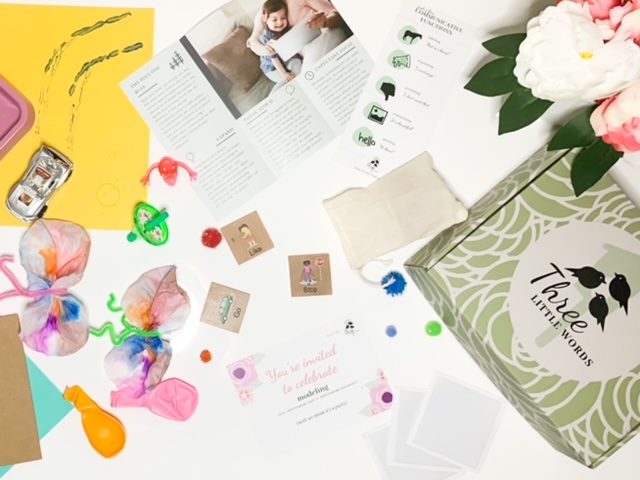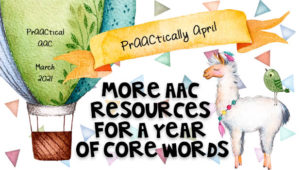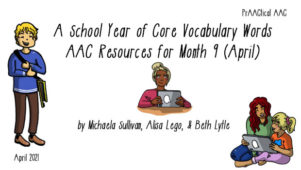How I Do It: Building & Using Language Kits
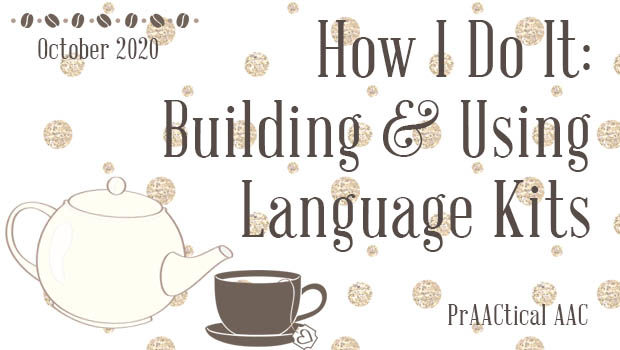
 Our community is so fortunate to have talented AAC clinicians who generously share their tips for working smart and being efficient. Today, we welcome SLP Krista Hadeed, owner of Utter Brilliance Therapy Services, who is sharing her experiences in creating language kits that can be used in AAC therapy and instruction. Krista specializes in AAC and serves individuals with complex communication needs in South Florida. She has some great ideas for organizing materials in ways that make our work more efficient.
Our community is so fortunate to have talented AAC clinicians who generously share their tips for working smart and being efficient. Today, we welcome SLP Krista Hadeed, owner of Utter Brilliance Therapy Services, who is sharing her experiences in creating language kits that can be used in AAC therapy and instruction. Krista specializes in AAC and serves individuals with complex communication needs in South Florida. She has some great ideas for organizing materials in ways that make our work more efficient.
:::::::::::::::::::::::::::::::::::::::::::::::::::::::::::::::::::::::::::::::::::::::::::::::::::::::::::::
Let’s talk Language Kits!
This year has been a challenging time for all of us, but it has also provided us with the opportunity to rethink our approaches and solutions to some common problems. While these problems are not exclusive to therapy during a pandemic, the shift in daily routine has certainly influenced the way we approach AAC communication partner training and support.
The research shows us that aided language input helps to support language comprehension and expression as well as the development of some early sentence forms (Sennott et al., 2016). This strategy also validates the AAC user’s mode of communication. We also know that the communication partners who implement this evidence-based strategy outside of the therapy room make a tremendous impact, in part due to the sheer amount of extra time they get to spend with the AAC user.
Barriers to AAC use and implementation outside of the therapy room still persist. These types of AAC interactions don’t always come naturally to communication partners (Kent-Walsh et al., 2019), and sometimes, even the best intentions come with some hesitation and uncertainty. What if we had a tool to provide to valuable AAC team members so they have a way to learn these strategies and increase their confidence in doing so?
As clinicians, we love a good “no prep” or “low prep” activity, especially when our focus is directed towards evidence-based implementation and technique. So, why not create a language kit that can be loaned out to team members and families? As clinicians, we can use these kits as some great “grab and go” options, too!
The concept of a language kit is not new. In fact, teachers and therapists have been creating these DIY kits for years. These versatile tools can also be cost-effective, depending on the manipulatives you include.
So, exactly how can you construct your own language kit?
- Choose your language concept/target
Will you be organizing your language kits by core word? Or maybe you’re thinking of grouping each kit by a target language concept, such as object function, phrase construction, opposites, or feelings.
- Gather your manipulatives
Depending on the focus of your kit, you can add in items that relate to your main concept. For example, if your kit targeted the concept of “same/different”, you can add in pairs of the same item, along with other items that are unrelated. For our example, we selected the core words “sit”, “on”, and “off”. We included the book, “There’s a Bear on my Chair”, which gives the reader many opportunities to model our target core words during a shared reading activity. We added some cars that can drive “on” and “off” a track and some farm animals who can “sit on” a tractor and then be “taken off”. We can even go fishing and comment when there’s a fish “on” the line! The box itself gives us the opportunity to take the cover “on” and “off”, as well!
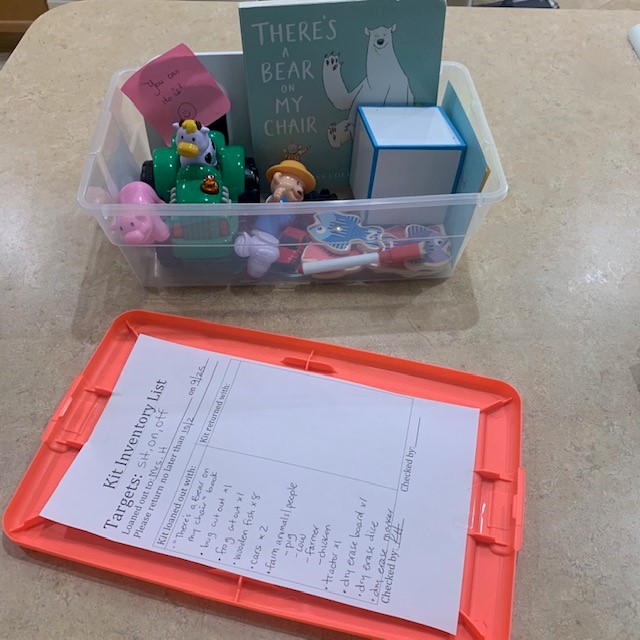
- Consider adding in additional items
What about including a small dry-erase board and some markers to work on predictable chart writing or literacy skills? How about an index card or two explaining an evidence-based strategy? In our example, we included some suggestions of how the communication partner can model each target word or concept in 1-word, 2-word, or 3-word phrases.
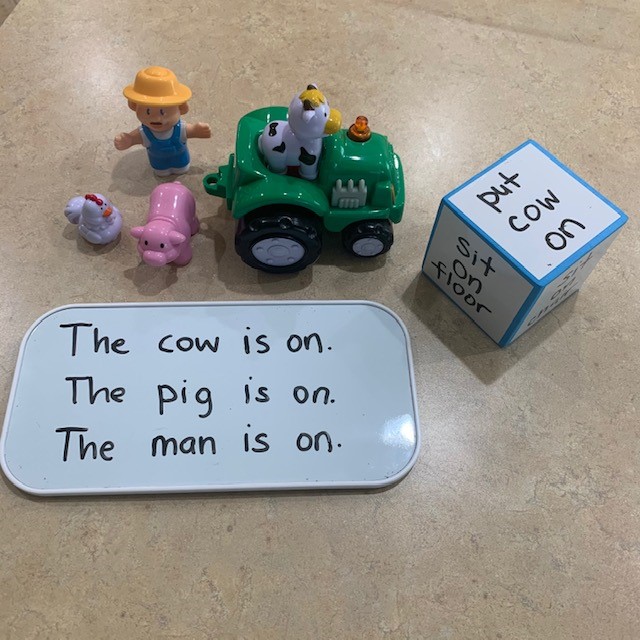
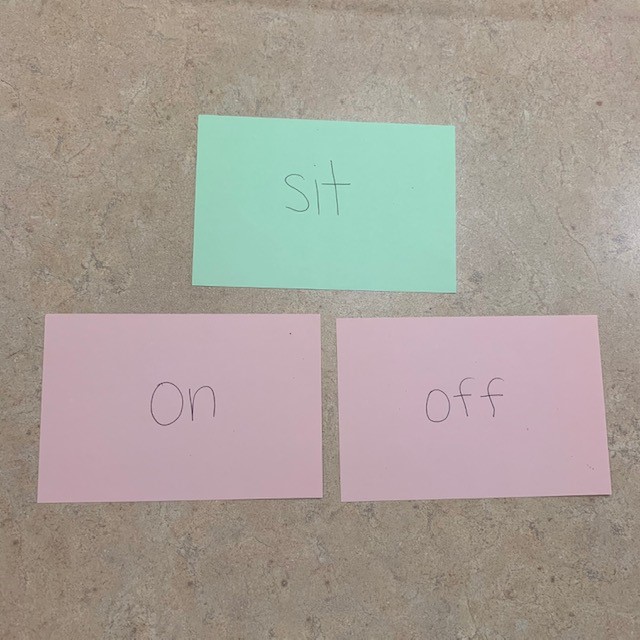
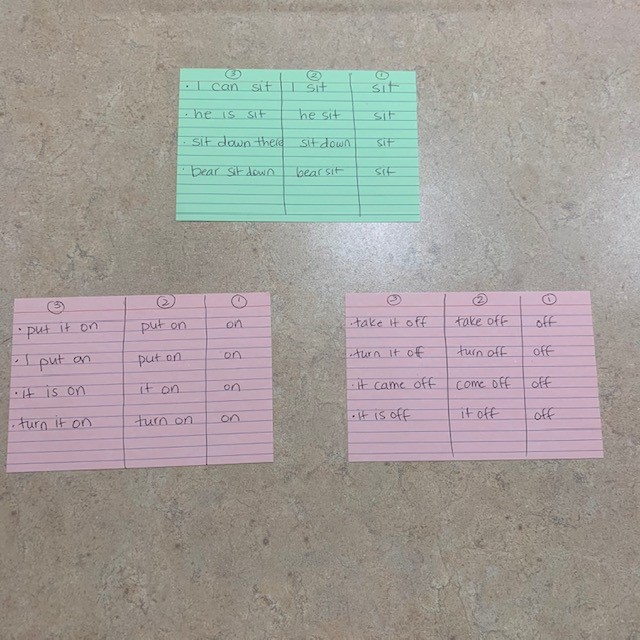
- Choose your container
The options are endless. A personal favorite at the moment is a clear, plastic container with a securable lid. This is a no-spill, easy to sanitize option, especially if you’re planning to loan your kit out. In our example, we used a clear plastic pocket affixed to the side of the kit so that can we identify the targeted word or concept at a quick glance.

- Don’t forget your inventory list
If you have at least a few manipulatives in your kit, chances are you’re going to want a way to keep track of them. There are many ways to do this. In the past, we’ve affixed a laminated inventory list of every item in a kit to the underside of the kit cover. This list is checked before loaning out a kit and checked again when the kit is returned. We also try to include a fun, encouraging note for our communication partner to remind them that they can do this!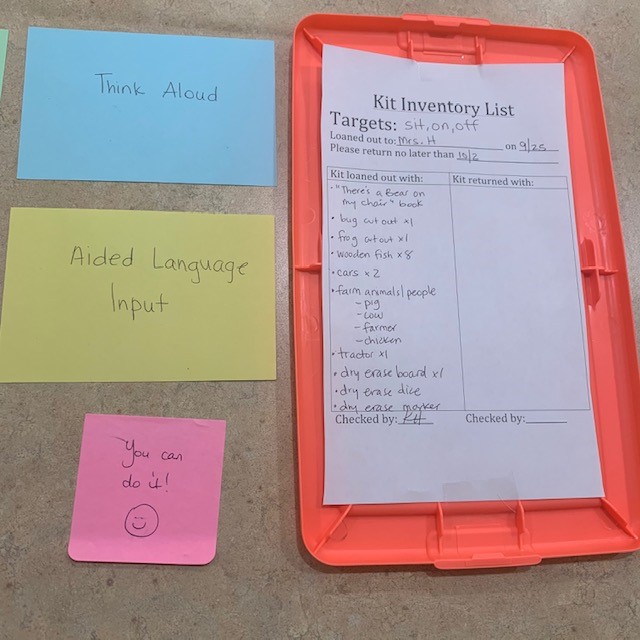
You can even take these language kits a step further! (We strive to work smarter, not harder, after all). Identify the core AAC team members and assign a language concept to each. Then, everyone gets practice making their kits and you can loan them out amongst the group!
There are many great reasons to develop and use language kits in our AAC work, but they do take creativity, time, and effort. If that’s not your cup of tea, I invite you to come take a look at my Three Little Words boxes here.
References
Sennott, S.C., Light, J., & McNaughton, D. (2016). AAC modeling intervention research review. Research and Practice for Persons with Severe Disabilities, 41, 101–15.
Kent-Walsh, J., Murza, K.A, Malani, M.D., & Binger, C. (2019) Effects of Communication Partner Instruction on the Communication of Individuals using AAC: A meta-analysis. Augmentative and Alternative Communication, 31 (4), 271-284.
About the Guest Author
Krista Hadeed, MS, CCC-SLP, is a Speech-Language Pathologist and owner of Utter Brilliance Therapy Services in Broward County, FL. She specializes in working with Augmentative and Alternative Communication users and their families. Krista is also the creator of Three Little Words Box, a monthly subscription box that provides core vocabulary activities designed to empower communication partners of AAC users. You can follow Krista on Instagram at @utterbrilliancefl and @threelittlewordsbox.
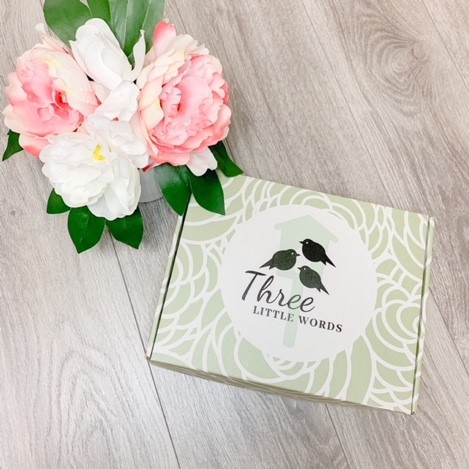
Filed under: Featured Posts, PrAACtical Thinking
Tagged With: core vocabulary, Language Intervention and Therapy, materials
This post was written by Carole Zangari
